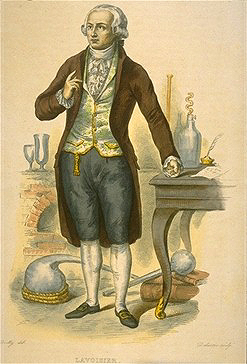| << Chapter < Page | Chapter >> Page > |



Oxygen was first discovered by Carl Wilhelm Scheele ( [link] ) by heating mercuric oxide (HgO). Scheele called the gas fire air because it was the only known supporter of combustion. He wrote an account of this discovery in a manuscript ( Treatise on Air and Fire ) submitted in 1775. Unfortunately for Scheele his work was not published until 1777. In August 1774, an experiment conducted by Joseph Priestley ( [link] ) sunlight on mercuric oxide (HgO) inside a glass tube, which liberated a gas he named dephlogisticated air . Priestley noted that candles burned brighter in this gas. He even went as far as breathing the gas himself, after which he wrote: "The feeling of it to my lungs was not sensibly different from that of common air, but I fancied that my breast felt peculiarly light and easy for some time afterwards." Priestley published his findings in 1775. Because he published his findings first, Priestley is usually given credit for the discovery of what became known as oxygen.


Interestingly, Lavoisier ( [link] ) claimed to have discovered this new substance independently. However, Priestley visited Lavoisier in October 1774 and told him about his experiment and how he liberated the new gas. Furthermore, Scheele also posted a letter to Lavoisier on September 30, 1774 that described his own discovery. Lavoisier never acknowledged receiving it, however, a copy of the letter was found in Scheele's belongings after his death.


Notification Switch
Would you like to follow the 'Chemistry of the main group elements' conversation and receive update notifications?